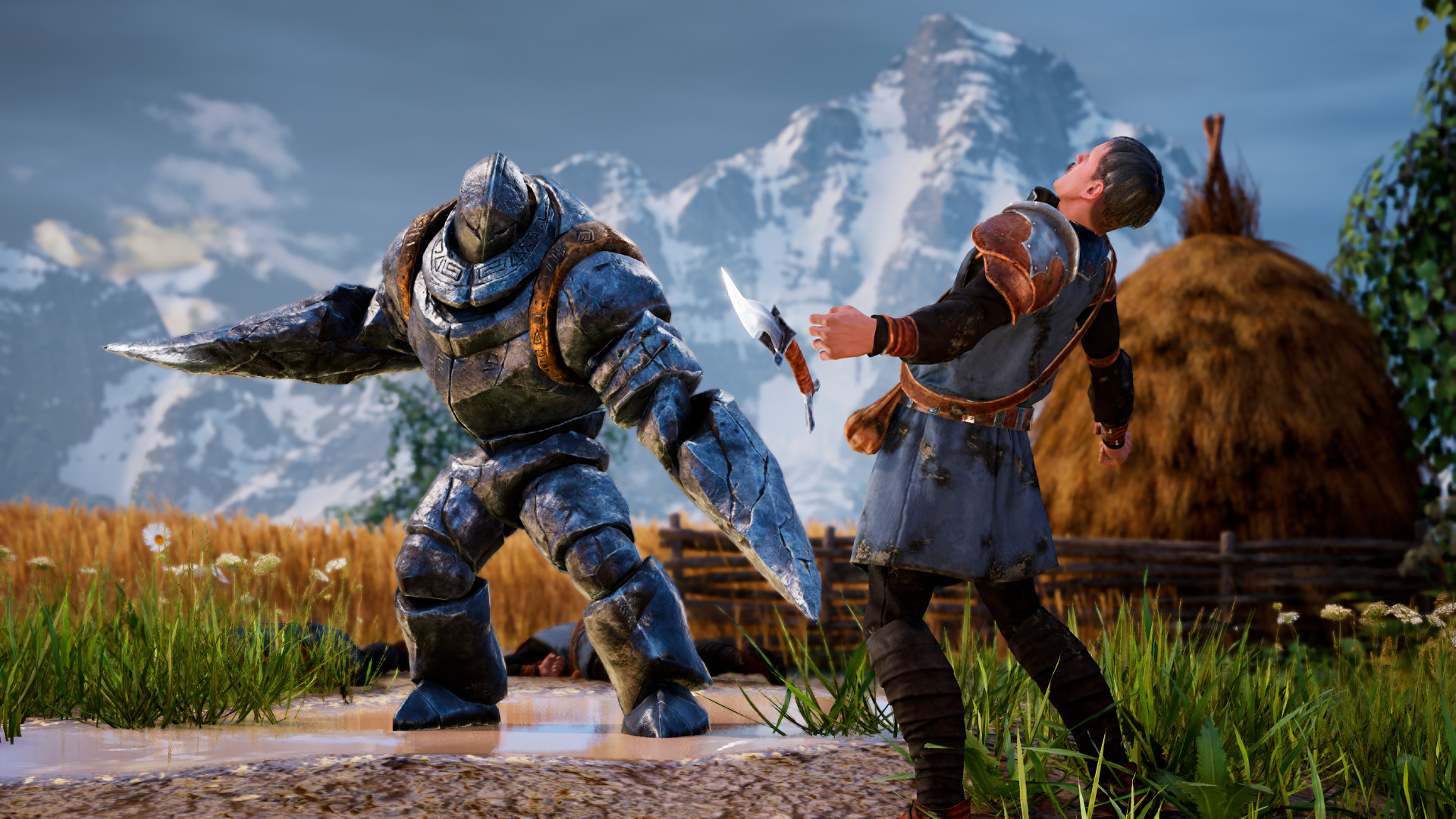
It came as a shock to open King's Bounty 2 and discover it had switched to a scaled-up 3D world. The compressed, cartoonish fantasy of the previous games has been blown up to realistic proportions, while you can now hop off your horse and saunter between its traditional turn-based battles on foot.
All in all, the result is an odd game, sitting uniquely in the borderlands between the RPG and strategy genres. I've played ten hours or so of a preview build, sticking my toe into all manner of sidequests and sending dozens of humans, animals and monsters to their doom in battle. I like it, I'm pretty sure, although I'm saddened that a lot of the more fantastical elements of King's Bounty: The Legend appear to have been sanded away.
Speaking of which, this is the belated direct sequel to the 2008 tactical RPG in which you could marry a zombie—or, if you preferred, a frog. Just one bonkers sidequest in a game brimming with fairy tale weirdness. A game that played a bit like Heroes of Might & Magic, as you roamed a vibrant fantasy world gathering resources and units, before employing those units in turn-based battles.
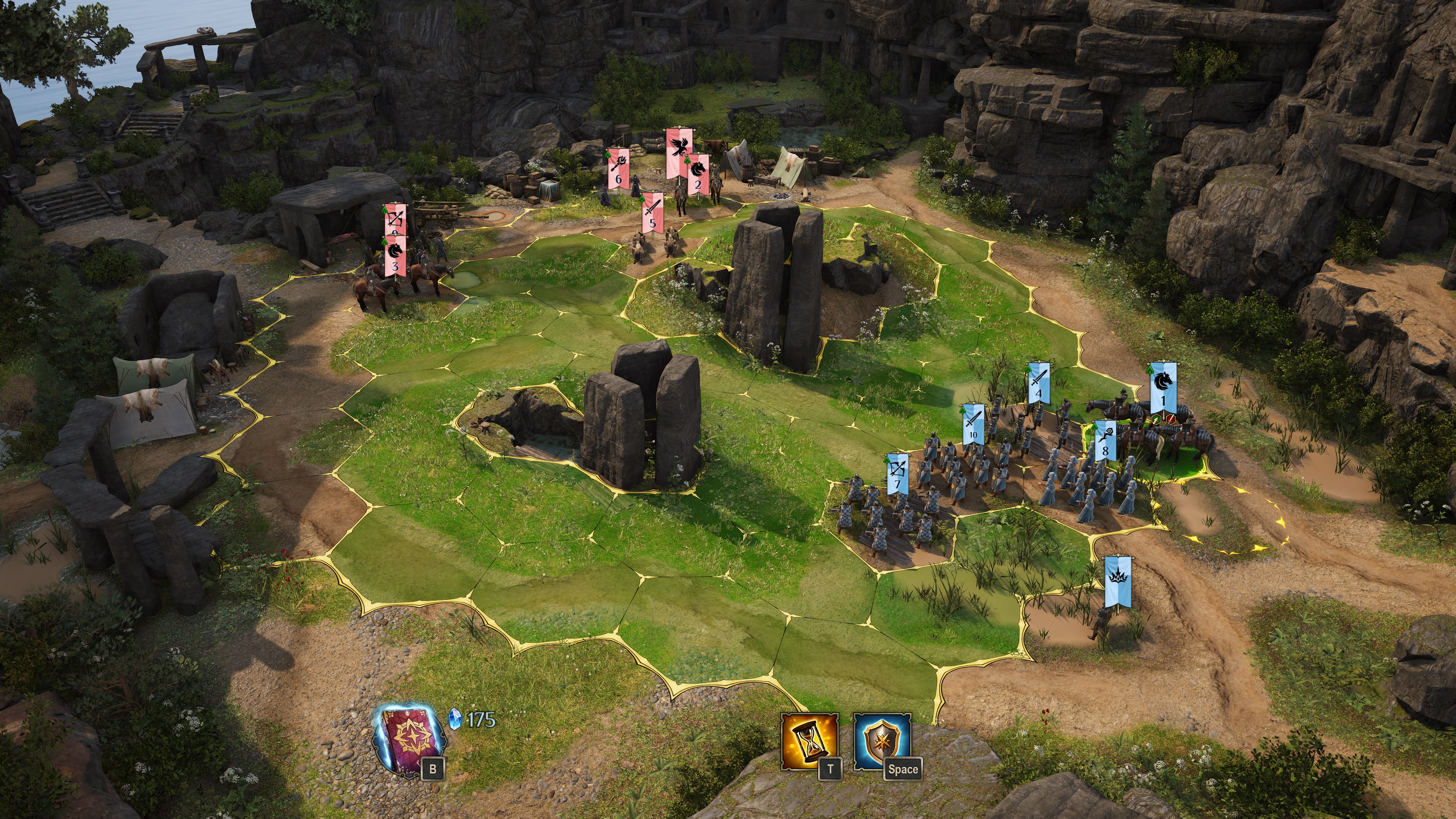
I won't bang on about the story of this sequel, as I found it stilted and a little dull, but it begins with your character being let out of jail to run an errand for the prince, and that's as good a reason to start adventuring as any. There are three characters to choose from, a warrior, mage or paladin, although you only ever support your troops from the sidelines in the King's Bounty series, flinging encouraging spells or magical missiles onto the battlefield.
But while they do the fighting, your role, as in the previous games, is to traipse around the world, resolving troubles and gathering resources and additional units for your small army. It's a beautifully rendered setting, particularly after you escape the wintry tutorial area and find yourself in the more varied Crown Lands, which feel huge and non-linear, but without quite reaching the daunting scale of an open world.
I'm a fan of these more intimate, hand-crafted game settings, although the world of King's Bounty 2 is far more static than in something like The Witcher 3. It's beautiful, but inert: there's no day-night cycle, while enemies are restricted to a sprinkling of bespoke encounters, either initiated during cutscenes or bedded down in the world, where they are amusingly cordoned off behind big glowing barriers. If you cross the threshold, you'll trigger combat, although you can always retreat if you don't feel ready to take them on.
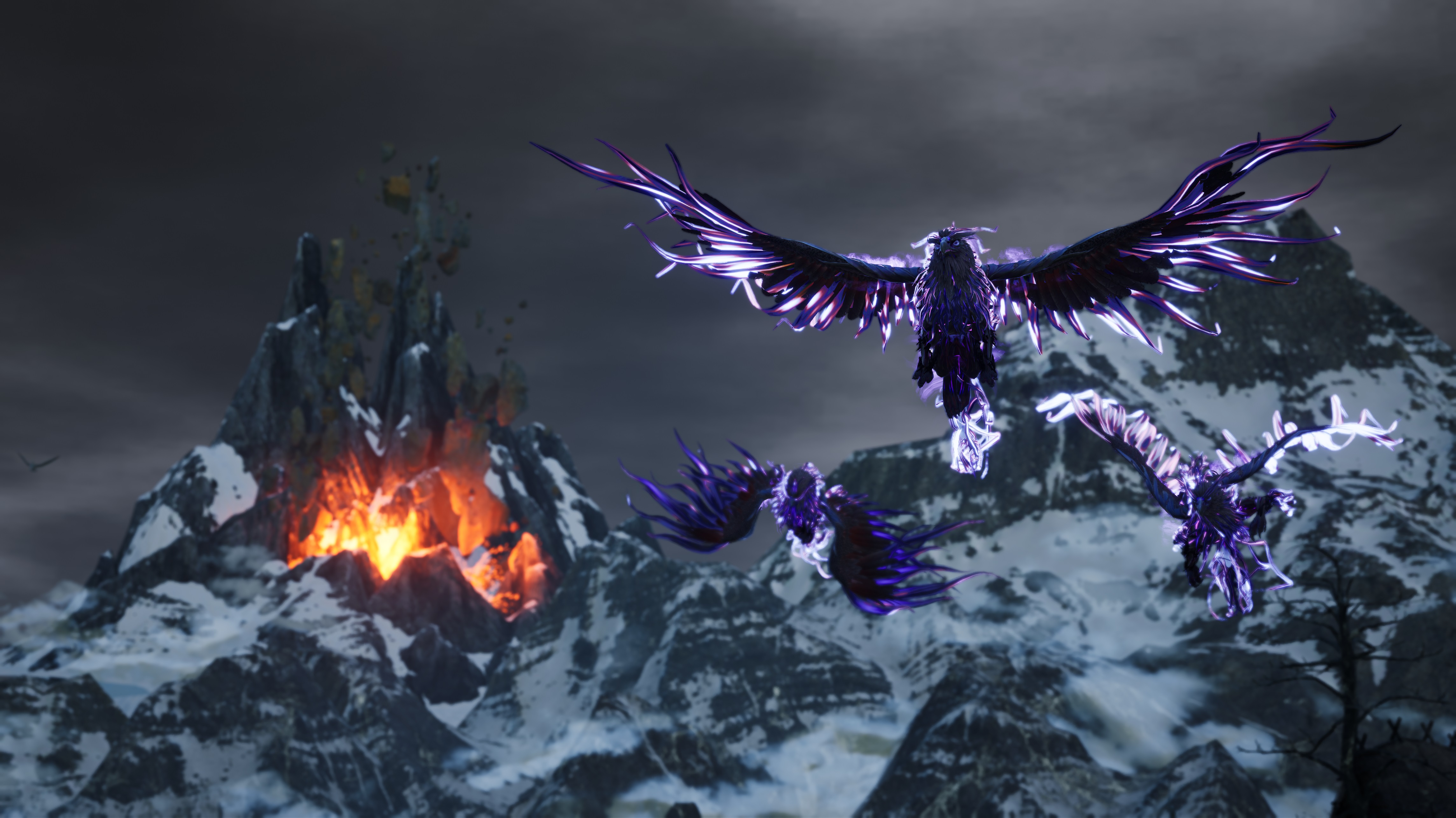
Mean girl
Once I had arrived in the Crown Lands, I spent most of my time collecting sidequests, which seemed to crop up pretty much everywhere I turned. If the sheer number was impressive—and I spent my time in just one corner of the map, with swathes remaining unexplored—then I'm less enthusiastic about the quality of the quests themselves.
Keep up to date with the most important stories and the best deals, as picked by the PC Gamer team.
They were strangely curt and matter-of-fact, as if someone had taken notes from The Witcher 3, while neglecting to imbue the stories with any great humour or emotional depth.
It didn't help that the character I picked was a persistent jerk to everyone she met, and that the game contains no dialogue options so I could attempt to steer her in friendlier directions. Still, at least the sidequests took me to some interesting and attractive parts of the world, from the clay pit and workshop where golems are made, to an eerie, abandoned village sitting in the shadow of a hill.
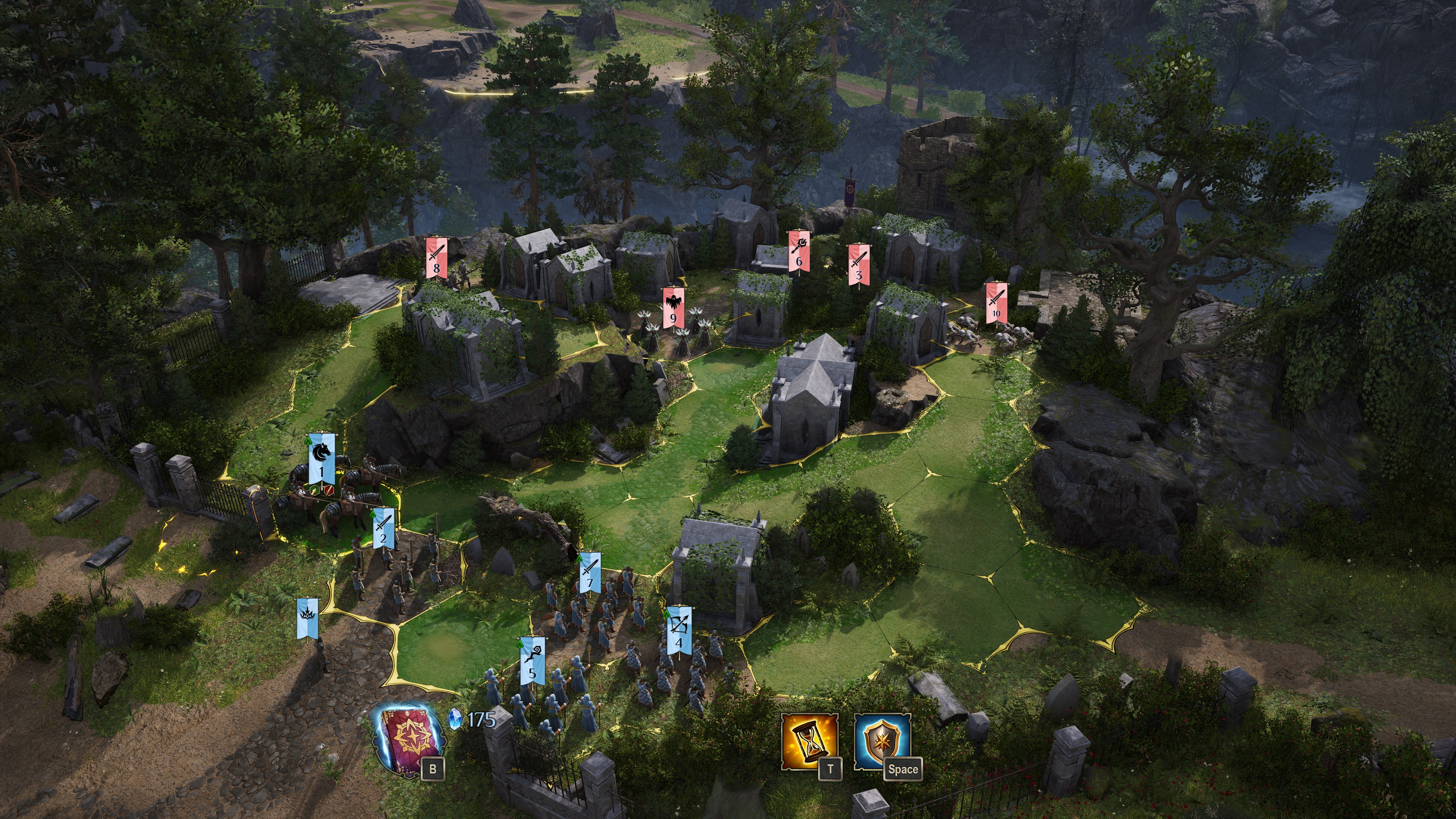
From what I've seen of the game, I think it will suffer when compared to modern open world RPGs, for which a 'living, breathing world' is of paramount importance. However, if you approach it from another angle—as an ambitious reworking of the core King's Bounty concept—there's more to be hopeful about.
Remember those enemies I mentioned, the ones waiting politely behind their glowing barriers? It's a feature common to games with strategic maps, and I admire developer 1C Entertainment for using it in a more grounded setting, even at the risk of undermining the sacred immersion. There's no time pressure to engage with baddies, nor any risk of a surprise attack as you serenely wander through this fantasy world. But the absolute best part of the glowing barriers is that the bandits or skeletons, bears or elemental creatures will scamper out and waggle their weapons as you approach the border, like playground bullies in a Beano comic strip. If I didn't find much humour in the writing, then it's here in the game mechanics, as 1C retains the series' essence in its brave new 3D world.
When you do choose to engage in combat, you're told exactly which enemies to expect, and how strong they are compared to your current party. In King's Bounty, you hire nameless soldiers to do your dirty work, including human swordsmen and archers, beasts such as wolves and bears, and even undead skeletons and ghouls. They're there, in your back pocket, as you clomp around the world, popping out every so often to dutifully fight on your behalf.
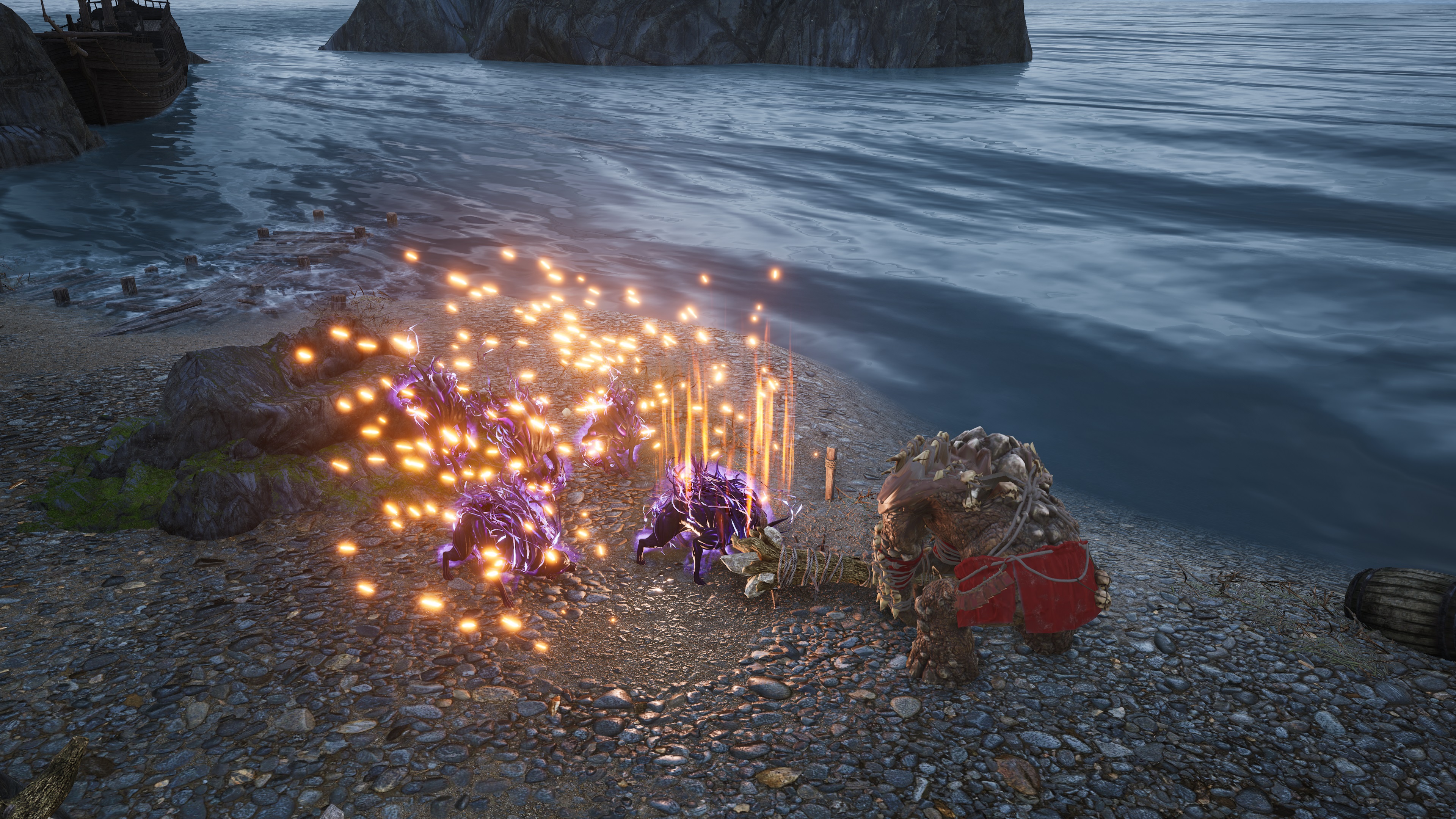
While previous Bounty battles took place on tiny hex-based grids, here those grids have been expanded, and embellished with different levels of elevation, and various line-of-sight blocking obstacles. You position your units, and then take turns with the enemy to whittle down everyone's health bars, while your hero chips in occasionally with a powerful spell. The game is good at informing you about the potential outcomes of your actions, so I would often chew on turns for ages, trying to minimise my losses the best I could.
Hard times
If every member of a unit perishes—say, if all four of your golems turn to mulch—then you'll lose them forever and have to swap in units from your reserve, or else track down a recruiter to buy replacements. Balance fixes have been promised for the finished game, and I hope they apply to the combat, as the difficulty ramped up sharply after I entered the Crown Lands. I scoured the world pretty thoroughly for encounters that would train me up for the harder battles, but even after fighting supposedly weaker groups of enemies, I would often come away bearing significant losses.
I found surprisingly few battles during my time with King's Bounty 2, either coming upon them out in the wilderness, or triggering combat during quests. Sidequests generally contained just one battle (along with a very simple environmental puzzle), although these were tricky encounters that required some thoughtful tinkering to win. Probably the most important decision in a battle will happen just before you start it: which units are you going to take into combat with you? You can only bring five, and they span a broad range of strengths and abilities, from the snarling attack dogs that can perform nifty hit-and-run attacks, to the iron golems that hit hard but move incredibly, painfully slowly.
You might now be wondering how humans, elemental constructs, thieves and skeletons get on with each other, and the answer, unsurprisingly, is: they don't. There are four general classes of unit: Order, Anarchy, Power and Finesse, and their morale will drop if you thoughtlessly mix them all together. But even aside from that consideration, just five units is a hard limit, and it can be difficult to know which ones to bring to each particular rumble. I'm hoping the finished game will make some effort to educate in this regard, as I never felt like I was doing much more than just muddling through the combat.

As I put down King's Bounty 2—my exploration curtailed on several fronts by battles I wasn't powerful, or clever, enough to beat—I was left scratching my head at what I made of its peculiar genre collision. The combat is thoughtful, an expansion of a solid battle system that makes strong use of the newly 3D backdrops, although it does feel curiously separate from the exploration phase of the game. I liked being able to prepare for encounters, and begin them at my leisure. However, these far-flung fights made the intervening world feel, well, like wasted space, particularly when the vast majority of the loot I scrounged from my rather thorough exploration of it just consisted of useless, sellable trinkets.
At the time of writing, we're still over two months from release, so there's still a little time for these two halves to be jammed together with a bit more elegance, and for the unforgiving tactical battles to be introduced a tad more gently into the game.
And, while it's at it, if 1C could bung in a bit more whimsy—it could let us marry, oh, a ghost—that'd be the icing on the cake.
Tom loves exploring in games, whether it’s going the wrong way in a platformer or burgling an apartment in Deus Ex. His favourite game worlds—Stalker, Dark Souls, Thief—have an atmosphere you could wallop with a blackjack. He enjoys horror, adventure, puzzle games and RPGs, and played the Japanese version of Final Fantasy VIII with a translated script he printed off from the internet. Tom has been writing about free games for PC Gamer since 2012. If he were packing for a desert island, he’d take his giant Columbo boxset and a laptop stuffed with PuzzleScript games.


